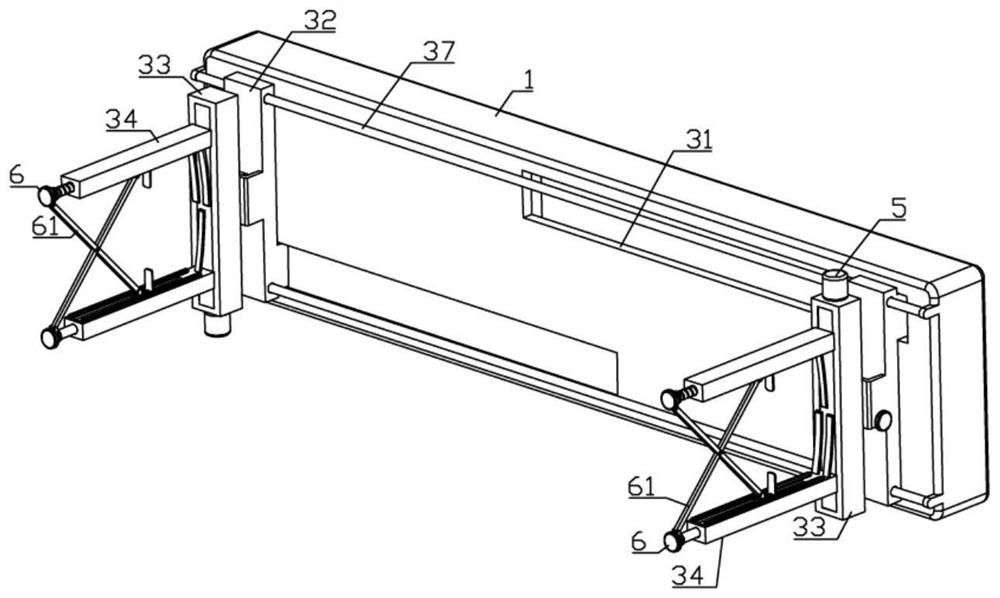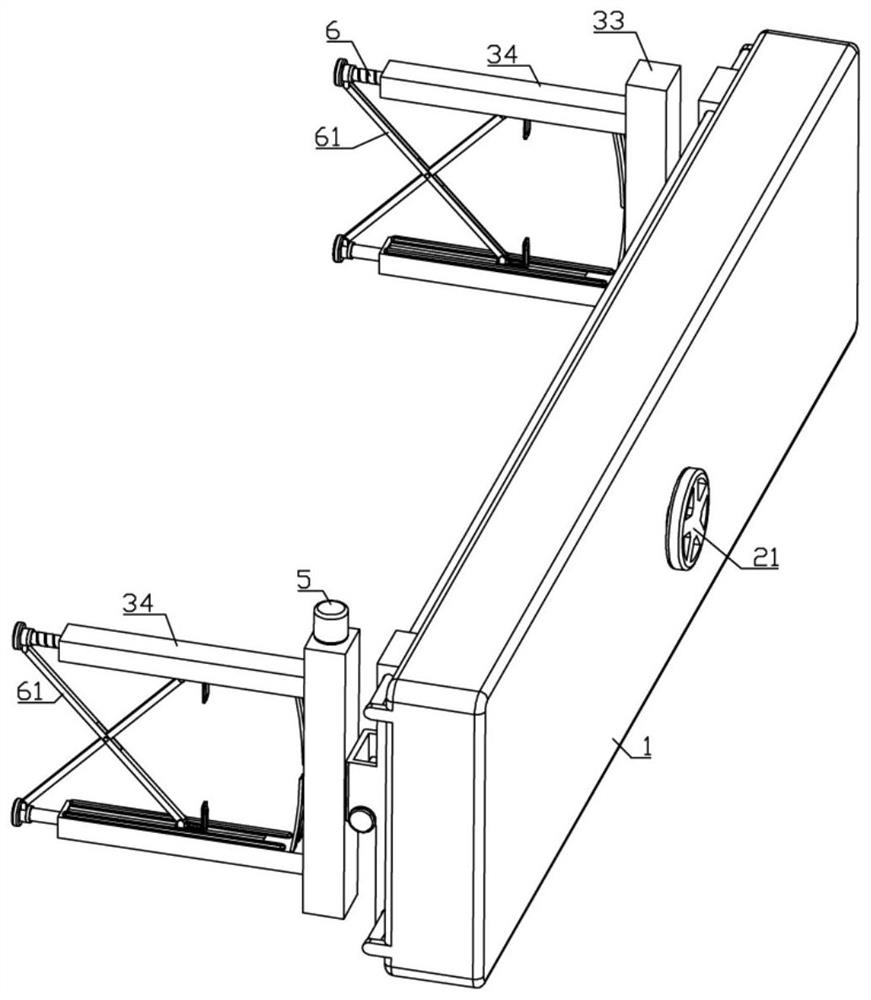Auxiliary fixing device for fracture surgery
A fixation device and a technique for surgery, applied in the field of medical devices, can solve problems such as inability to meet adjustment needs, secondary damage to muscle tissue, and complicated operations, and achieve convenient, effective and fast fixation, buffer protection against excessive pressure, and avoid excessive pressure. Effect
- Summary
- Abstract
- Description
- Claims
- Application Information
AI Technical Summary
Problems solved by technology
Method used
Image
Examples
Embodiment 1
[0034] like Figure 1-8 As shown, an auxiliary fixation device for fracture operation includes a long plate 1, an installation chamber 11 is opened in the middle of the long plate 1, an adjustment mechanism is arranged in the installation chamber 11, and two outer centers of the long plate 1 are symmetrically arranged with the adjustment mechanism. fixed mechanism;
[0035] The adjustment mechanism includes a central gear 2, a transmission handle 21 and two transmission racks 3. The central gear 2 is rotatably arranged in the middle of the installation chamber 11. The transmission handle 21 is arranged on the side of the long board 1 and is connected to the central gear 2. The racks 3 are slidably arranged in the installation chamber 11 and are symmetrically distributed in the center. The two transmission racks 3 are meshed and matched with the central gear 2 , and the end of the long plate 1 away from the transmission handle 21 is provided with a movable rack 3 that matches t...
Embodiment 2
[0041]On the basis of the first embodiment, a further improvement is made. A ring cavity 22 is opened in the middle of the central gear 2 , and a plurality of meshing teeth 23 are evenly arranged on the outer surface of the central gear 2 . Inside, a pressure spring 24 is arranged between the meshing tooth 23 and the inner wall of the ring cavity 22; a push-pull electromagnet 25 is also arranged between the annular cavity 22 and the meshing tooth 23, and the pressure spring 24 is sleeved on the output shaft of the push-pull electromagnet 25. , the output shaft of the push-pull electromagnet 25 is connected with the meshing teeth 23 .
[0042] In order to better match the rehabilitation needs of different patients' fracture states, such as bone separation or overlap after fracture, and to avoid injury to patients due to excessive traction or tension, the meshing teeth 23 on the central gear 2 cooperate with the ring cavity 22 and the pressure spring 24 to prevent excessive tract...
Embodiment 3
[0047] On the basis of the first embodiment, the threaded lifting assembly includes a motor 5 and a bidirectional threaded rod 51. The bidirectional threaded rod 51 is rotatably arranged in the assembly cavity 35. The thread segments on both sides of the threaded rod 51 have opposite directions of rotation, and the two clamping plates 34 are respectively threaded with the thread segments on both sides of the bidirectional threaded rod 51 and are matched with the assembly cavity 35; Therefore, when the patient's limb needs to be clamped and fixed by the clamping plate 34, it is only necessary to control the steering of the motor 5, and then drive and control the steering of the bidirectional threaded rod 51, and cooperate with the limiting effect of the column 33 to make the two clamping The plates 34 are close to or away from each other, so as to clamp and fix the limbs of the patient, and cooperate with the auxiliary fixator to further fix the limbs of the patient, which has a...
PUM
 Login to View More
Login to View More Abstract
Description
Claims
Application Information
 Login to View More
Login to View More - R&D
- Intellectual Property
- Life Sciences
- Materials
- Tech Scout
- Unparalleled Data Quality
- Higher Quality Content
- 60% Fewer Hallucinations
Browse by: Latest US Patents, China's latest patents, Technical Efficacy Thesaurus, Application Domain, Technology Topic, Popular Technical Reports.
© 2025 PatSnap. All rights reserved.Legal|Privacy policy|Modern Slavery Act Transparency Statement|Sitemap|About US| Contact US: help@patsnap.com



